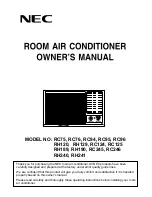
44
CHAPTER
9
Model selection and capacity calculation
STEP2. Selection of Dx-coil unit system
Please see Example 1-1 for details.
In this example, L Dx-coil unit system is the same as Example 1-1 .
80 %
72.5 %
LGH-100RVX-E
16 ˚C
29.1 kJ/kg(DA)
8.1 kW
III: Calculation of Lossnay energy recovery effect
(A) Lossnay model
(B) Temperature exchange efficiency for winter (at 1000m
3
/h)
(C) Enthalpy exchange efficiency on heating (at 1000m
3
/h)
(D) Lossnay outlet air temperature
= ( (I) – (G) ) x (B) + (G) = (20
˚C
- 0
˚C
) x 0.80 + 0
˚C
(E) Lossnay outlet air enthalpy
= ( (J) – (H) ) x (C) + (H) = (38.3 – 4.7) x 0.725 + 4.7
(F) Energy recovered by Lossnay
= ( (E) – (H) ) x
ρ
x Q
f
/3600 = (29.1 – 4.7) x 1.2 x 1000/3600
Lossnay outlet air
Indoor Unit
of
Air Conditioner
Exhaust air
Lossnay Unit
Dry bulb temperature
[˚C]
16
Absolute humidity
[
g/kg(DA)
]
5.2
Relative humidity
[
%
]
46
Enthalpy
[
kJ/kg(DA)
]
29.1
Total energy recovered
[
kW
]
8.1
Ventilation load
[
kW
]
3.1
Ventilation load ratio
[
%
]
27
Return air
Dry bulb
temperature
(I)
20°C
Absolute
humidity
7.3 g/kg(DA)
Relative
humidity
50%
Enthalpy
(J)
38.3 kJ/kg(DA)
Outdoor air
Dry bulb
temperature
(G)
0°C
Absolute
humidity
1.9 g/kg(DA)
Relative
humidity
50%
Enthalpy
(H)
4.7 kJ/kg(DA)
Adequate Dx-coil unit model
GUG-02SL-E
Lossnay model
LGH-100RVX-E
Adequate outdoor unit model
PUHZ-ZRP71
Temp. control feature
Return air temp. control
Note: Please see the picture below to find (G) to (J).
Summary of Contents for GUG-01SL-E
Page 3: ...ii ...
Page 76: ...Y16 005 Sep 2016 MEE ...
















































